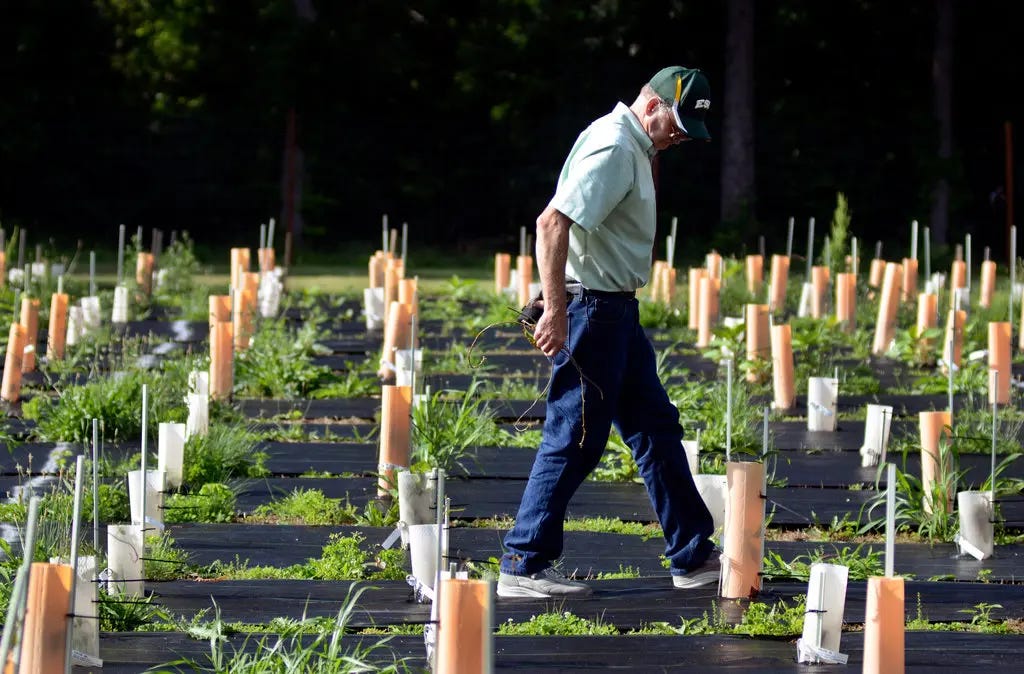Are Regulatory Systems Hindering Innovation in Biotechnology?
Analyzing the regulatory process behind new products in biotechnology and progress on the American chestnut tree.

“At this time, Darling the transgenic American chestnuts with enhanced blight tolerance, are still undergoing federal regulatory review by the EPA, the USDA-APHIS, and the FDA,” according to the SUNY College of Environmental Science and Forestry (ESF). “Timing is not predictable for any of the agencies, and the EPA specifically may involve a multi-phased approval process.”
In my last article, I discussed the environmental impacts and social attitudes toward reintroducing the American chestnut tree. What I only briefly touched on were the regulations impacting reintroduction, and how they help and hinder innovation of this sort. In this article, I’m going to talk through the specifics of getting a transgenic plant approved, how the process can hinder innovation, and why hindering innovation matters.
As stated above, the transgenic American chestnut developed by SUNY-ESF must be reviewed by three federal agencies: the Environmental Protection Agency (EPA), the Food and Drug Administration (FDA), and the Department of Agriculture’s Animal and Plant Health Inspection Service (USDA APHIS). This review process is part of the coordinated framework, a foundational system by which the federal government regulates biotechnology.
Under the coordinated framework, each department is responsible for separate, occasionally overlapping sections of the safety and effectiveness of any given biotechnology product. In theory, a producer like SUNY-ESF only has to find the agencies that apply to their product, get approval and release their product to the public. In practice, it’s a little more complicated than that.
In fact, most producers choose to submit their products to all three agencies regardless of whether they explicitly have authority. In the case of the American chestnut, it is not required to submit to the FDA, as the chances of anyone using the chestnut for food in the near future are slim. However, under the Food, Drug and Cosmetic Act, the producer of any food is responsible for ensuring that the food is safe. Because of this, most producers, including SUNY-ESF, submit their products for FDA review in order to avoid future liability.
Additionally, the process of going through the coordinated framework is expensive and time consuming. On average, it takes $115 million and 16.5 years to bring a biotechnology-derived plant to market. The longest part of that process is regulatory review and approval, which can take as much as 50 percent of the time.
The time and effort required is due to an abundance of completely understandable caution, but limits the number of companies that are willing to explore the opportunities of biotechnology. Only larger companies have the funds and staff to dedicate to that timeline, making it difficult for startups to enter the industry at all.
This is severely limiting innovation in food biotechnology. Peter W.B. Phillips, writing for the Genetic Literacy Project, highlighted why that matters:
Rising costs, lengthening review periods and pervasive uncertainty about which technologies will be acceptable in different markets have dampened revenues and investments and lowered the potential for plant biotechnology to contribute to global food security. Increased regulatory costs and an expanding approval process stifle innovation—the innovation that is needed to secure an adequate supply and appropriate quality of food at affordable prices.
The global population reached 8 billion people in 2022 and is expected to reach 9 billion by 2037. As the population grows, it will be necessary to produce more food. Additionally, with this growth, people will be forced to migrate, and farmland will be sacrificed to development. In order to overcome this restricted production ability, we will need to pursue every possible method of increasing food production, including biotechnology. Limiting which people can afford to use biotechnology limits the innovations that will reach the market, which could have disastrous consequences down the line.
The coordinated framework found in the United States and the similar regulatory processes found in other countries are designed to protect consumers and the environment, but they’ve gone too far and become too complicated. At this point in time, they hinder innovation more than they help, and in doing so could contribute to significant food scarcity as the global population grows.
The American chestnut, which could bring back an entire American industry, including that of selling American chestnuts for flour or roasting, only got as far as it did because of nonprofit backing and public interest. If other, more productive plants and crops are forced to follow the same path, food scarcity may become a serious issue. If that happens, would we be willing to admit that we didn’t do everything we could to prevent it?
Best,
Grace for the Don’t Count Us Out Yet Team





